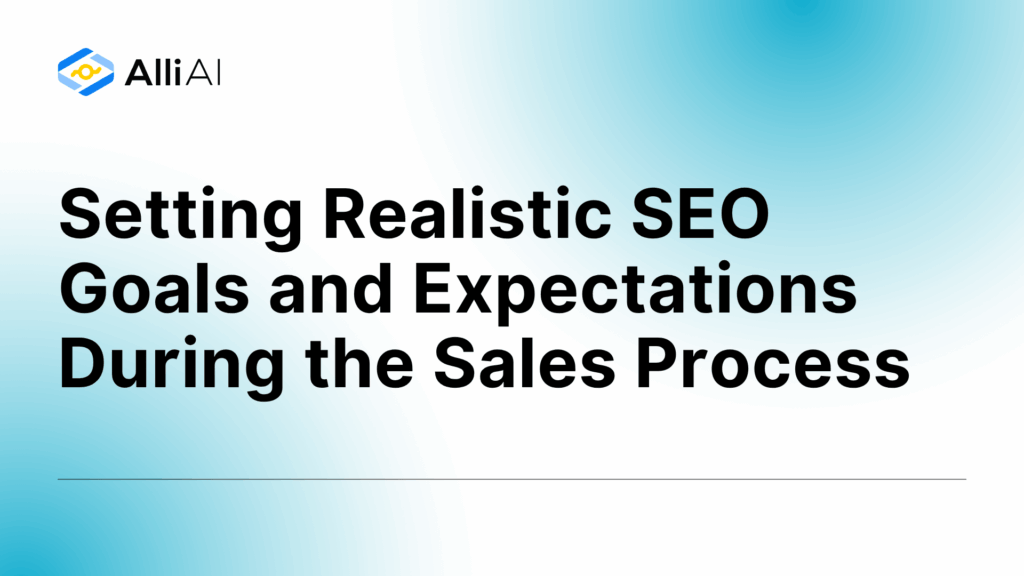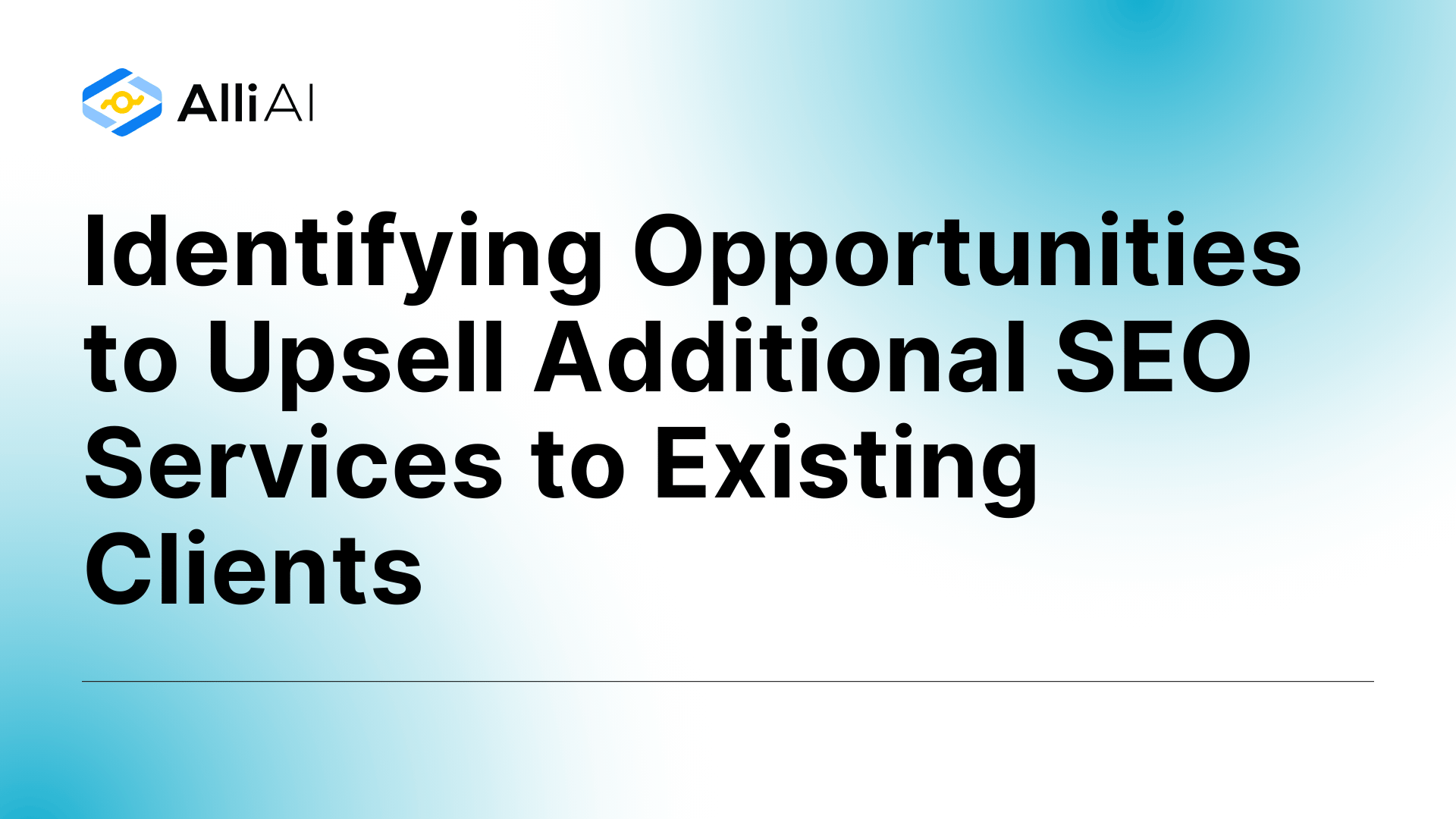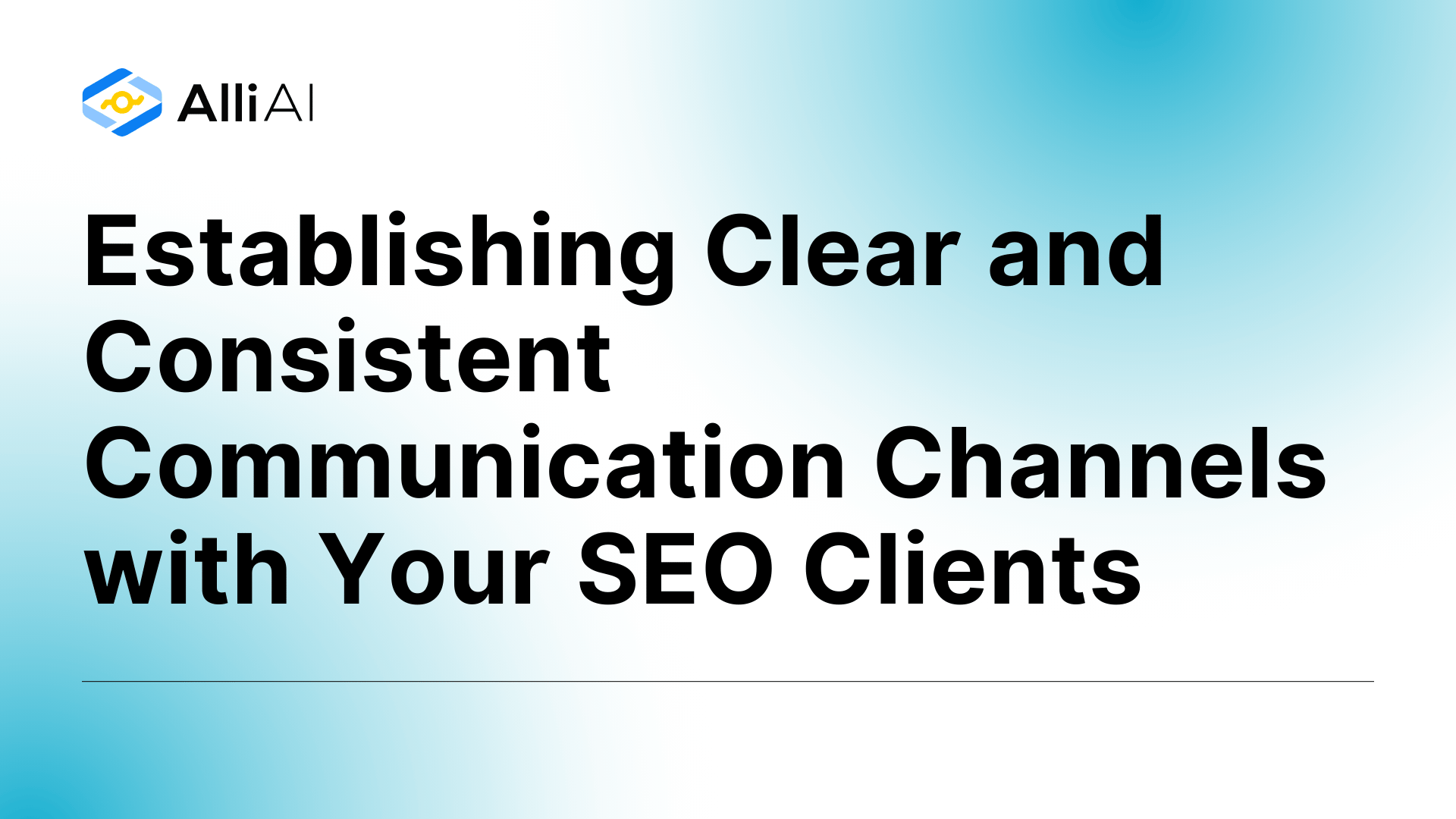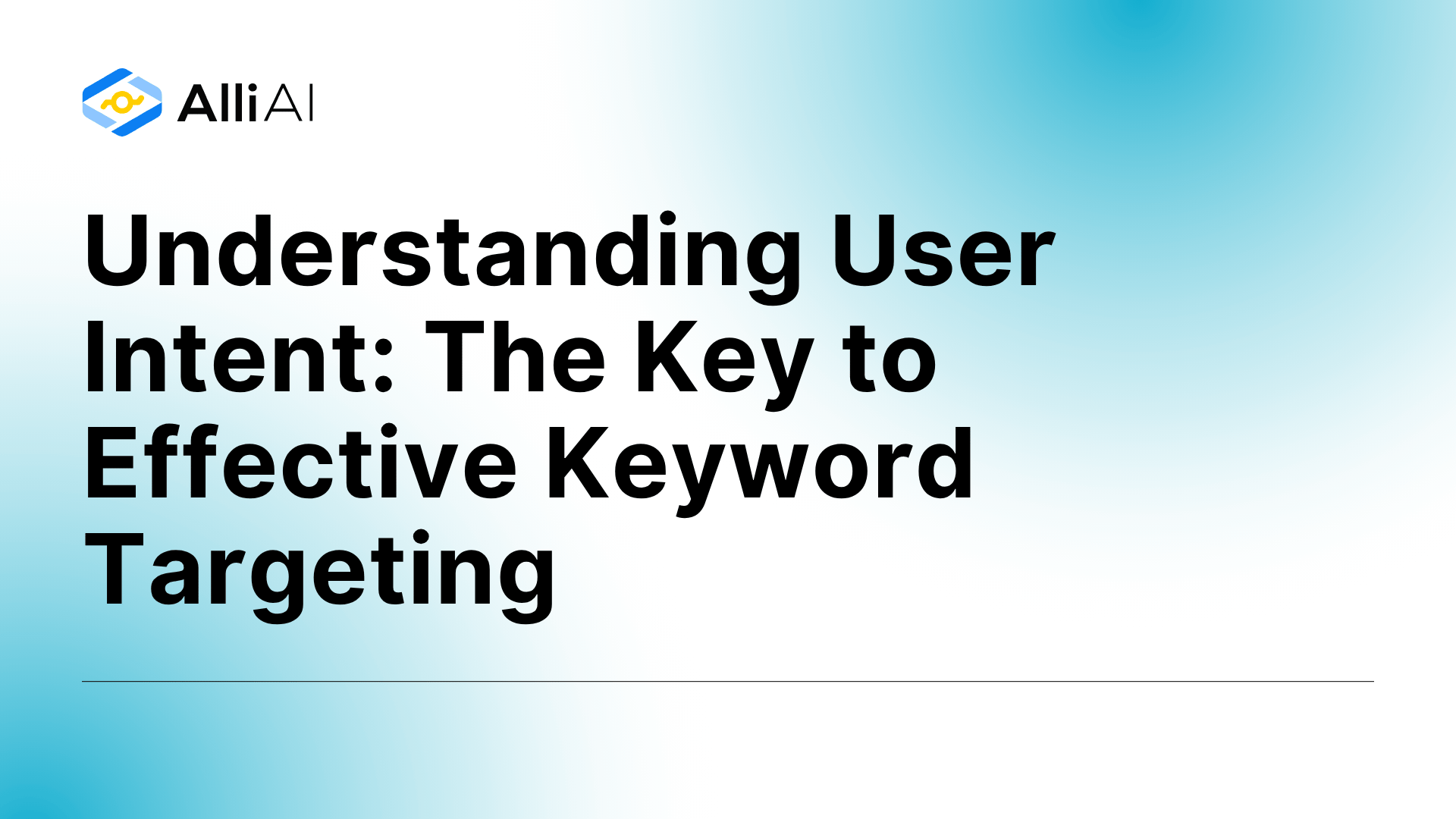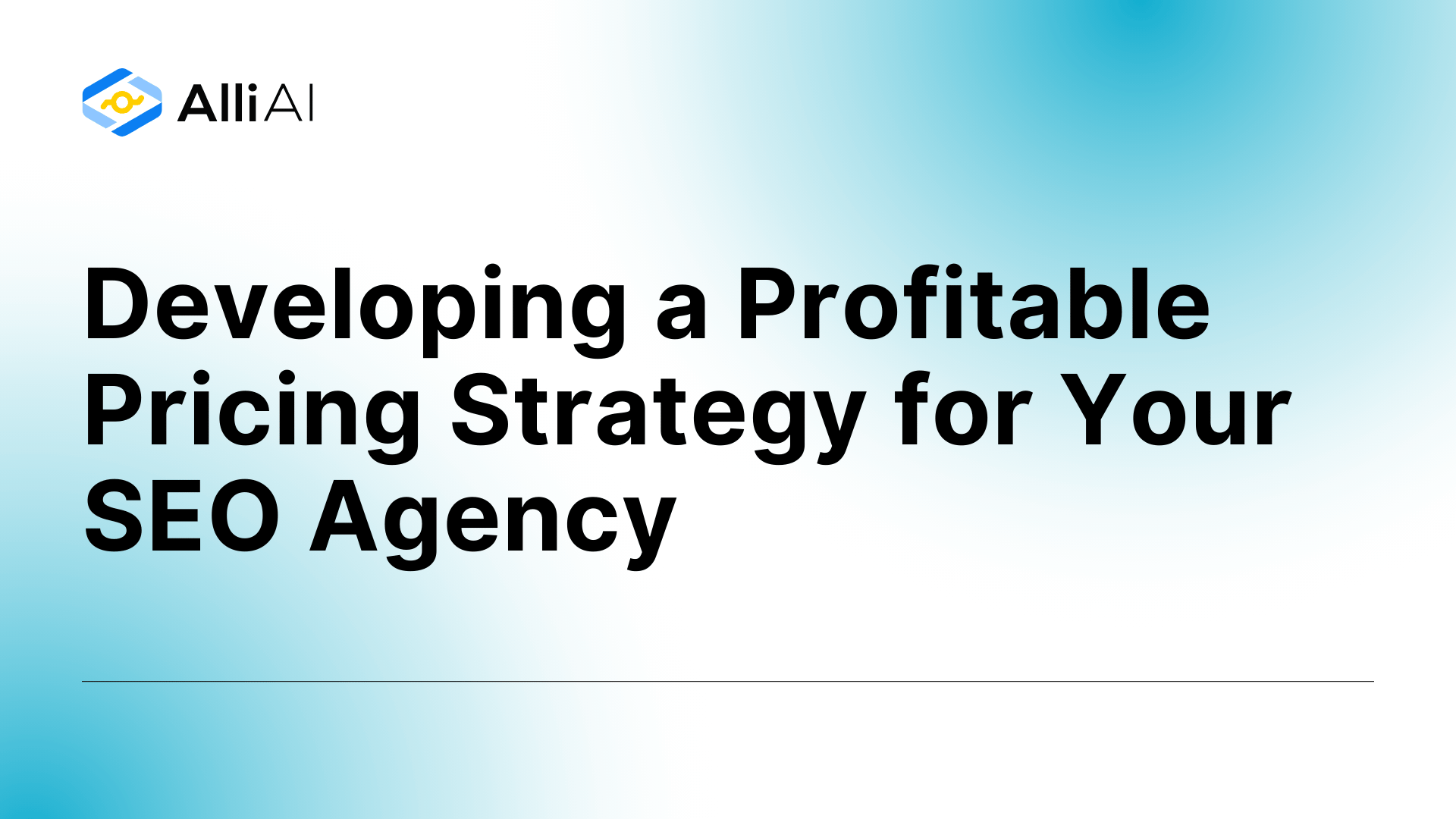Are you struggling with client retention in your SEO business? Finding yourself constantly explaining why results aren’t immediate or defending your process? The “secret” to long-lasting client relationships isn’t just delivering results—it’s setting proper expectations from day one.
In this comprehensive guide, I’ll walk you through a proven framework for managing client expectations around timelines, communication, and deliverables. This approach has helped countless agencies transform anxious, impatient clients into patient, collaborative partners who understand the SEO journey.
Step #1: Educate Clients on SEO Fundamentals First
Before discussing timelines or deliverables, establish a shared understanding of how SEO actually works.
Many client frustrations stem from fundamental misconceptions about SEO. Your first job isn’t to promise results—it’s to reshape how clients think about the entire process.
Start by explaining that SEO is:
- A dynamic, ongoing process (not a one-time checklist)
- Influenced by external factors beyond your control (algorithms, competition, user behavior)
- A long-term investment requiring patience and adaptation
Pro tip: Frame this educational process as shifting their perspective from “purchasing a service” to “investing in a collaborative, long-term strategy.”
Address these common misconceptions head-on:
- Myth: SEO delivers instant results
Reality: Significant changes take months, not days or weeks - Myth: SEO is a one-time task
Reality: It requires continuous monitoring and optimization - Myth: Keywords are all that matter
Reality: Modern SEO encompasses technical health, content quality, user experience, and much more - Myth: More links always mean better rankings
Reality: Quality and relevance of links matter more than quantity - Myth: SEO is about “tricking” search engines
Reality: Effective SEO focuses on providing genuine value to users
For example: If a client says, “My competitor just bought 1,000 backlinks and their rankings jumped—we should do the same,” use this as a teachable moment about quality over quantity and the potential risk of algorithm penalties.
Fail to establish this foundational understanding, and you won’t have a chance at setting realistic timelines—it’s as simple as that.
Step #2: Position the Relationship as a Partnership
Transform the engagement from a vendor-client dynamic to a collaborative partnership.
SEO success requires expertise from both sides—your SEO knowledge and their business insights. Make this explicit from the beginning.
Clearly outline what you need from them:
- Access to necessary platforms (Google Analytics 4, Search Console, CMS)
- Insights about their business, industry, and target audience
- Timely reviews and approvals of strategic recommendations
- Patience and trust in the process
Remember: The most successful SEO campaigns involve active participation from both parties.
For example: “While we’ll handle the technical optimization and content strategy, your insights about customer pain points will be invaluable for creating content that resonates with your audience. Our most successful clients meet with us biweekly to share these insights.”
This partnership framing accomplishes two critical things:
- It sets expectations about their responsibilities in the process
- It creates shared ownership of results
Step #3: Communicate Realistic SEO Timelines
Be crystal clear about how long SEO results typically take, and the factors that influence these timelines.
Nothing damages client relationships faster than unrealistic timeline expectations. Address this proactively with specific, data-backed timeframes:
- Noticeable Changes: 3-6 months for initial ranking movements and early traffic improvements
- Significant Results: 4-12 months for substantial growth in organic traffic and leads
- Competitive Niches: 12-24+ months for highly competitive industries (finance, insurance, legal, healthcare)
Warning: Never promise specific rankings by specific dates. Instead, provide ranges based on experience and industry benchmarks.
Explain the key factors that will influence their specific timeline:
| Factor | Impact on Timeline |
|---|---|
| Website Age/Authority | New sites (0-6 months) face a slower start compared to established domains (1-3+ years) |
| Current Website Condition | Sites with pre-existing issues require more foundational work before seeing progress |
| Industry Competition | Breaking into SERPs dominated by established players takes significantly more time |
| Scope of SEO Efforts | Comprehensive strategies yield faster results than limited campaigns |
| Budget Allocation | Higher budgets allow for greater resource allocation, potentially accelerating results |
| Client Responsiveness | Delays in providing access or approvals can significantly extend timelines |
For example: “Your website is relatively new (8 months old) and operating in the competitive financial advisory space. Given these factors, expect to see initial ranking improvements for lower-competition terms in months 3-4, but significant traffic growth will likely take 8-10 months of consistent effort.”
Step #4: Break Down the SEO Process into Phases
Help clients visualize SEO as a progression of distinct phases, each with its own timeline and expectations.
Rather than treating SEO as a black box that eventually produces results, break it down into a logical sequence with visible milestones:
Phase 1: Foundation (Months 1-2)
- Technical audit and fixes
- Comprehensive keyword research
- Competitor analysis
- Strategy development
- Analytics setup and benchmark establishment
Phase 2: Implementation (Months 2-4)
- On-page optimization of existing content
- Technical improvements deployment
- Content calendar development
- Initial content creation
- Early link building outreach
Phase 3: Growth (Months 4-8)
- Expanded content creation
- Active link acquisition
- Conversion optimization
- Expanded keyword targeting
- Regular performance analysis and strategy refinement
Phase 4: Scaling (Months 8+)
- Targeting more competitive keywords
- Advanced content strategies
- High-authority link building
- Market expansion opportunities
- Performance optimization based on accumulated data
Pro tip: Create a visual timeline showing these phases and share it during your kickoff meeting. This tangible roadmap helps clients understand where they are in the journey.
For example: “Right now, we’re in the Foundation phase, focusing on fixing technical issues that are preventing Google from properly indexing your site. These fixes won’t immediately impact rankings, but they’re essential groundwork for the growth we’ll see in phases 3 and 4.”
Step #5: Create a Detailed Contract and Statement of Work
Transform verbal agreements into a comprehensive written document that leaves no room for misinterpretation.
A meticulously crafted contract or Statement of Work (SOW) is your best defense against misaligned expectations. Ensure it includes:
Services Included (Be Specific!)
Instead of vague “SEO Services,” list precisely what you’ll deliver:
- Technical SEO audit (covering site speed, mobile-friendliness, indexation issues, etc.)
- Keyword research (X number of primary keywords, X number of supporting terms)
- On-page optimization (X pages per month)
- Content creation (X blog posts monthly at X words each)
- Link building (strategy development + X outreach campaigns quarterly)
- Monthly performance reporting and strategy calls
Quantified Deliverables and Timelines
For each service, specify exactly what the client will receive and when:
- Technical Audit Report (by end of week 2)
- Keyword Research Document (by end of week 3)
- Content Calendar (monthly, delivered by the 25th of preceding month)
- Performance Reports (monthly, delivered by the 5th of following month)
- Strategy Calls (biweekly, scheduled for X day at X time)
Explicit Exclusions
Clearly state what’s NOT included in your services:
- Website development or redesign
- Content writing beyond specified deliverables
- PPC campaign management
- Social media management
- Public relations activities
Change Management Process
Outline exactly how additional requests will be handled:
- Written documentation of the request
- Assessment of impact on timeline and resources
- Formal change order with associated costs
- Written approval before work begins
Warning: Failing to document scope exclusions and change management processes is the number one cause of scope creep and unprofitable projects.
Step #6: Architect Effective Communication Protocols
Establish robust communication systems that prevent misunderstandings and build trust.
Communication breakdowns are often at the heart of expectation mismatches. Create a clear framework from day one:
Onboarding and Kickoff
- Send a personalized welcome email within 24 hours of contract signing
- Provide a comprehensive welcome package including:
- Team introductions and roles
- Overview of your SEO methodology
- Communication plan details
- Project timeline with key milestones
- Scope of work summary
- Conduct a structured kickoff call covering:
- Team introductions (both sides)
- Deep dive into the client’s business
- Confirmation of SMART KPIs
- Review of scope, deliverables, and timeline
- Final agreement on communication protocols
- Send a detailed follow-up summary within 24 hours
Communication Logistics
Explicitly define and document:
- Preferred Channels: Specify which platforms (email, Slack, project management system) will be used for different types of communication
- Frequency: Set a regular cadence for reports and meetings (typically monthly reports and quarterly strategy reviews)
- Response Times: Establish clear SLAs (e.g., response within 24 business hours for standard inquiries)
- Points of Contact: Define primary contacts on both sides and clear escalation paths
Pro tip: Use a communication plan template that clients sign off on during onboarding. This becomes your reference point if communication issues arise later.
Reporting Strategy
Make your reporting purposeful, not just routine:
- Focus on business impact metrics aligned with the client’s goals
- Provide context and insights, not just data
- Include clear, prioritized recommendations for next steps
- Use visualizations that make trends easy to understand
For example: Rather than just reporting “keyword rankings improved,” connect this to business outcomes: “Rankings for high-intent keywords improved by 15%, contributing to a 22% increase in qualified leads this month.”
Step #7: Practice Proactive Engagement
Don’t wait for clients to come to you with questions or concerns—anticipate and address them first.
Reactive communication breeds uncertainty and anxiety, especially during the early months when major results aren’t yet visible. Instead:
- Share wins as they happen: Did a blog post start ranking on page 2? Did site speed improve after technical fixes? Send a quick update rather than waiting for the monthly report.
- Inform about industry changes: When major algorithm updates occur, proactively reach out with an explanation and your plan to address any potential impacts.
- Anticipate client concerns: If you notice rankings fluctuate temporarily (which is normal), send a preemptive explanation before the client panics.
- Solicit regular feedback: Ask specific questions about your communication, reporting, and the overall relationship. Then visibly act on that feedback.
Pro tip: Create calendar reminders to send at least one proactive update between formal reports. These “surprise” communications demonstrate your ongoing attention to their account.
For example: “Just wanted to let you know that Google released a core update yesterday. We’re monitoring your site closely, but so far we’re seeing stability in rankings. Here’s what we’re doing to ensure your site maintains its positions through this update…”
Step #8: Align SEO Goals with Business Objectives
Connect your SEO efforts directly to the client’s business goals to demonstrate concrete value.
When clients can see how SEO activities support their primary business objectives, they’re more likely to remain patient during the ramp-up period. Work together to:
- Define success metrics that go beyond rankings:
- Qualified organic traffic growth
- Conversion rate improvements
- SEO-attributed leads or sales
- Return on investment (ROI)
- Create SMART goals:
- Specific: “Increase organic traffic to service pages”
- Measurable: “by 15% within 6 months”
- Achievable: Based on website history, competition, and resources
- Relevant: “leading to a 10% increase in qualified leads”
- Time-bound: Clear timeline for achievement
- Regularly review and adjust these goals as needed
Remember: A client who sees SEO directly contributing to business growth will be far more understanding when rankings fluctuate (as they inevitably will).
Step #9: Manage Progress Perceptions During the Waiting Period
Actively shape how clients perceive progress during the months before major results appear.
The gap between work initiation and significant results is a vulnerable period where clients may grow impatient. Proactively manage this phase by:
- Consistently reinforcing timeline expectations: Gently remind clients of the previously discussed timeframes.
- Highlighting early wins: Call attention to improvements in:
- Technical health scores
- Initial rankings for long-tail keywords
- Increases in indexed pages
- Improvements in site speed metrics
- Growth in specific traffic segments
- Demonstrating activity value: Connect completed tasks directly to the overall strategy:
“This month’s technical fixes addressed 80% of the crawlability issues we identified. This foundational work ensures Google can now properly index all your product pages, which is essential for the ranking improvements we’re targeting in Phase 3.” - Celebrating milestones: Acknowledge when you hit key markers, such as:
- Reaching page 1 for target keywords
- Breaking previous traffic records
- Surpassing specific competitors in visibility
- Achieving positive ROI
Pro tip: Create a visual progress tracker that shows movement toward goals, even when that movement seems incremental to the client.
Step #10: Implement Rigorous Scope Management
Protect both your agency’s profitability and the client’s timeline expectations through disciplined scope control.
Even with a detailed SOW, clients will inevitably request additional work. Handle these situations professionally:
- Quickly identify scope expansions: Recognize when requests fall outside the agreed boundaries.
- Respond promptly but carefully: “That’s an interesting idea. Let me check how it fits with our current scope and timeline.”
- Present options with transparency:
- Option A: Accommodate the request by adjusting the timeline for other deliverables
- Option B: Add the request as an additional service (with associated costs)
- Option C: Replace an existing deliverable with the new request
- Option D: Schedule the request for a future phase
- Document everything: Ensure all scope changes are captured in writing, including any impacts on timeline or budget.
For example: “We’d be happy to develop those additional landing pages you mentioned. Since this would be beyond our current scope of 4 optimized pages per month, we have two options: we can either replace two of the blog posts we had scheduled for next month, or we can add these as supplemental deliverables at our standard rate of $X per page. What works better for your needs?”
Conclusion: Building Lasting Client Relationships Through Expectation Management
Setting proper expectations with SEO clients isn’t just good business practice—it’s the foundation for sustainable, profitable client relationships.
By educating clients on SEO fundamentals, establishing partnership dynamics, communicating realistic timelines, breaking down the process into phases, creating detailed contracts, architecting effective communication, practicing proactive engagement, aligning with business goals, managing progress perceptions, and implementing rigorous scope control, you transform the client experience.
The result? Clients who understand the journey, trust your expertise, and remain committed partners through the inevitable ups and downs of SEO campaigns.
Remember these critical success factors:
- Educate before you promise
- Document everything in writing
- Communicate proactively, not reactively
- Connect all activities to business impact
- Manage perceptions during waiting periods
Now it’s time to implement this framework with your next client onboarding. The initial investment in setting proper expectations will pay dividends through reduced friction, increased trust, and longer client retention.
What expectation management technique will you implement first with your SEO clients?
